
 BROWARD HEALTH OFFERS FREE SCHOOL IMMUNIZATIONS
BROWARD HEALTH OFFERS FREE SCHOOL IMMUNIZATIONS
“Mobilize to Immunize” Returns with Low-Cost Physical Exams for Uninsured Children
By Lineth Fernandez

FORT LAUDERDALE, FLORIDA – Broward Health Community Health Services is offering free immunizations and low-cost physical exams for uninsured children (ages 4 to 18) at two community health centers during its “Mobilize to Immunize” event.
Caregivers will provide immunizations against infectious diseases such as whooping cough, measles, mumps, rubella, influenza, Hepatitis B and polio. Immunizations prevent dangerous sometimes life-threatening diseases such as chickenpox, diphtheria and human papillomavirus (HPV).
“Obtaining a school physical and immunizing your child is one of the best things you can do to safeguard their health,” said Aldo Calvo, D.O., family medicine, medical director of Ambulatory Services for Broward Health. “This free vaccination program offers, in many cases, a shot at a healthy life for so many children.”
Free immunizations and $30 school physicals are available Wednesday, August 3 from 2 to 5 p.m.; Wednesday, August 10 from 2 to 5 p.m., and Friday, August 12 from 8 a.m. to 4:30 p.m. at the following locations. A parent or legal guardian must be present and have the child’s current immunization record (Form DH 680).
Cora E. Braynon Family Health Center, 200 N.W. Seventh Avenue, Fort Lauderdale, 33311
Pompano Pediatric Primary Care Center, 601 W. Atlantic Blvd., Pompano Beach, 33060
To schedule an appointment, call (954) 302-3935.
************************************************************************************************
 More Monkeypox Cases Found in Kids As School Return Looms
More Monkeypox Cases Found in Kids As School Return Looms
By Robyn White
Source: Newsweek
Three more monkeypox cases have been confirmed in children as the back-to-school season looms.
Monkeypox continues to spread rapidly throughout the globe. According to CDC data, 22,141 monkeypox cases have now been reported since the outbreak first began in May.
Most, but not all, monkeypox cases have been concentrated in the gay community, among men who have sex with men. However, it spreads primarily through close, physical contact with an infected person, meaning anybody can catch it.
Cases in children have been of concern recently, ever since the U.S reported its first two. On July 22, the CDC confirmed that two children had come down with monkeypox in two unrelated cases.
Now, Brazil has also reported three more cases in children. Two were recorded in six-year-old girls, and one in a four-year-old boy.
Epidemiologist and health economist Eric Feigl-Ding shared the news on Twitter. Feigl-Ding also said Brazil had recorded its first death from the virus, in a “41-year-old immuno-
compromised man.”
Monkeypox is rarely fatal. However, it can be dangerous to vulnerable individuals—this has caused many to express concern on how it could affect children who catch it, especially as they are set to return to school in September.
However, experts do not believe that children are currently a high risk in this particular outbreak.
Although the virus has impacted children in previous outbreaks in countries where the virus is endemic—in central and western Africa.
“It certainly was the case that most deaths were in children, but in recent years that has changed a little. In my view, likely because of HIV in adults increasing risk of death in adults,” Paul Hunter, professor in Medicine, Norwich Medical School, told Newsweek.
“There have been a small number of cases in children globally but one of the difficulties is that a lot of the age data is merged at a global level making it difficult to say how many children cases have been outside of Africa. I suspect not many. But in non-African countries there have certainly been some. So, as it stands children living in a house with someone who has monkeypox are at risk but probably not much wider than that at present.”
Other experts have agreed. Data from previous outbreaks in Africa has pointed to a greater severity in children, however the variant causing this particular outbreak is behaving differently.
This means it is unlikely to spread in educational settings. “When we look at the epidemiology of the current outbreak, we see that it is not highly transmissible. In other words, most cases were infected through close skin-to-skin contact with an active patient, not through respiratory secretions or droplets or airborne infections,” Professor Eyal Leshem, infectious disease specialist and Director at the Center for Travel Medicine and Tropical Diseases at Sheba Medical Center, previously told Newsweek.
“Therefore, we do not think that rapid spread in educational settings, for example, is a highly portable scenario.”
************************************************************************************************

A Helpful & Uplifting camp (HU)
By Samara Rawls
Do you believe you have the qualities of a leader? Well, this past week I attended the 25th William R. Harvey Leadership Summit at Hampton University. Here, I understood what it looks like to be a leader, and how to lead correctly. Below I explain the main qualities of a leader so you can apply them to your life.
- Trustworthy: The first quality may seem obvious, but it is a key quality. Be trustworthy. This is because if you lose your trust as a leader, your followers will no longer respect or listen to you. If you have integrity and are honest, there will be no need to lie, and your followers will continue to trust you.
- Servant-like: This second quality may come as a shock to some, but make sure to have a servant-like mentality while being a leader. Remember, you are serving your followers and not just yourself. When you have this quality, your followers will enjoy being with you, and it won’t feel just like work.
- High Moral Standards: A leader’s third quality is to ensure you have a high moral standard. This means making sure the guidelines you live by are just and fair. By doing this, all your followers will be treated equally, and no one will feel unappreciated.
- Have Vision: Additionally, an essential part I learned is that leaders need to have a vision of where they want to be. You need to have an idea of where you want to go, and how you want to lead.
- Have Steps to Achieve your Vision: Lastly, make sure you have steps to achieve that goal, to make sure you can do it. This is very important because having steps for your visions and goals is what actually helps you achieve them. Anyone can have a vision, but when you create steps, you will actually reach your vision.
In closing these are just a few qualities of a leader you can apply to your life. While at the camp not only did we learn what it means to be a leader, but I also had a lot of fun. I met new friends from all over the country and had an amazing time with them. I had a great experience at this camp and would definitely love to go back again next year!
**********************************************************************************************
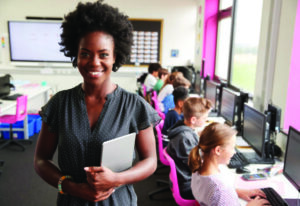 t’s Back-to-School Time Here’s What Teachers Need
t’s Back-to-School Time Here’s What Teachers Need
Flexible seating and instructional technology rose in popularity, according to DonorsChoose, which keeps data tracking the items most-requested by educators.
By Maya Pottiger
(Source Word In Black):
This time of year, social media feeds are flooded with teachers posting lists of supplies they need for their classrooms and asking for the public’s help to ensure students have everything from art supplies and calculators to books and reading bean bags. #ClearTheList, as the hashtag goes, along with social media posts to fund their DonorsChoose projects.
Like with medical bills, these back-to-school campaigns are another form of crowdsourcing in American society. Teachers, who are already underpaid, take to crowdsourcing to ensure they’re providing students the best and most effective educational experience they can. They inevitably front many out-of-pocket expenses throughout the year — the average rising to $750 per year in 2021 — so these summer wish lists help them get started.
In fact, it’s such a commonplace thing in our society now that Abbott Elementary — the blockbuster ABC show about teachers at an underfunded school in Philadelphia — did a whole episode about it.
After a few turbulent years of virtual and hybrid classes, schools are in-person again for the 2022-2023 school year, and teachers’ classroom needs have changed. After returning to the classroom in 2021, Richmond-area elementary school teacher Demetria Richardson realized some students hadn’t picked up pencils the entire time they were away.
“When we came back into the classroom 21/22, the needs were very different because our students had that year-and-a-half gap where they were not in school,” Richardson says. “Even though we did do virtual learning, it wasn’t everything that our students needed.”
Who’s Helping Teachers?
DonorsChoose, an organization that gives teachers a platform to post their classroom needs for anyone to find and fund, has seen an uptick in teachers, schools, and districts using the space since the pandemic. Launched in early 2000, it now has over 700,000 teachers in its database, and four out of five public schools across the country have had a teacher make a request through DonorsChoose, says Kristina “Steen” Joye Lyles, the vice president of Equity & Impact. Plus, six states have partnered with DonorsChoose to make sure their teachers get what they need.
In fact, Joye Lyles says she’s seen trends in people rallying around teachers and their needs — especially for teachers of color. There’s even a page called #blacklistcleared that specifically aggregates Black educators’ projects that need funding.
“We’re seeing on our site additional support for teachers of color, their classroom projects, additional support for classrooms that are equity focused,” Joye Lyles says. “Folks are really thinking about how you rally around getting more resources into classrooms this year.”
Classroom Basics and Flexible Seating Saw Increased Requests
So, what are teachers requesting as they head back to the classroom this fall?
DonorsChoose works with schools and districts nationwide, classifying them as “equity focus” and “non-equity focus.” It defines equity focus schools as those with at least 50% of the student body being Black, Latino, Native American, Pacific Islander, or multiracial, and at least 50% of students qualifying for free or reduced-price lunch.
In both equity-focus and non-equity focus schools, the early grades make up most of the DonorsChoose requests, regardless of whether the schools are classified as suburban or urban.
However, there was a 47% increase in requests from equity focus schools in 2021/2022 compared to the previous school year, and a 38% increase in requests from non-equity focus schools.
The 2021/2022 school year saw a 47% increase in requests from equity-focused schools compared to a 38% increase in requests from non-equity focused schools.
In the non-equity focus schools, computers and tablets and flexible seating have been among the top five requested items going back to the 2018/2019 school year. For both school classifications, books, educational kits, and instructional technology — things like printers, computer accessories, and cameras — were the top three requested items in both the 2020/2021 and 2021/2022 school years.
At equity focus schools, computers and tablets were among the top four most requested items for three of the last four school years. Interestingly, in 2021/2022, computers and tablets fell very far down the list, and classroom basics and flexible seating rose to the top five.
This is because, when schools shut down, government funding allowed schools to purchase devices for their students to be able to learn from home, Richardson says. So, while computers and tablets were high in demand prior to the pandemic, they’re now “one-to-one” in most school systems.
In terms of classroom basics, Richardson says some of the need is replenishing supplies that were sent home with students for virtual learning, like rulers and whiteboards. And, at least in her school, students aren’t allowed to share supplies, like pencils and scissors, meaning there needs to be more available. But the biggest need is headphones, which were supplied to students to help with learning from home.
But, now more than ever, teachers are looking for opportunities to get their students back in the classroom, Lyles says. And it’s critical for teachers to create an environment that students want to be in.
New Classroom Environments
Classrooms are changing to better accommodate students’ needs and be more inclusive learning environments. This is where flexible seating comes in, taking the form of wobble stools, rugs with beanbag chairs, and lap desks. These allow students to more freely move around the classroom whether it’s due to social/emotional trauma or hyperactivity.
Especially after years of virtual schooling, it can be tough for students going back into an environment and dealing with the wiggles and wanting to move around in different ways. So, the increase in flexible seating, Lyles says, could be evidence of teachers being mindful of their students.
“More teachers are realizing that we have to take care of and understand the needs of the child in order to educate the child,” Richardson says. “Whether it’s anxiety or whether they don’t want to be around their peers because they’re having trouble reading the passage, it’s giving them the option to move around the classroom, to sit in a different space to feel comfort so that they can handle that anxiety but continue to teach them.”
Along with classroom designs and student needs, “one of the things we know” is that the education system is “forever changing,” Richardson says.
“We want it to continue to change, but we want it to change for the better of our students,” Richardson says. “We know that we’re a global society, and we want our students to be ready for what comes next.”
**************************************************************************************************************
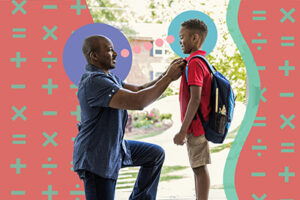
First Day of School Traditions That We Love
By Wendy Wisner
Fact checked by Emily Swaim
The first day of school is often a mix of excitement and fear for children. There’s usually a lot to look forward to, like making new friends, meeting new teachers, and getting to participate in school activities. But there are also many unknowns, too, like wondering if your teacher will like you, feeling uncertain about the academic workload, and stressing about making the adjustment to a new environment.
Making the back-to-school transition a positive and nurturing experience means starting school on the right foot. What better way to do that than to start the year off with a back-to-school ritual?
How Back-to-School Rituals Help Kids
Back-to-school rituals help our kids stay grounded as they make the transition from the carefree days of summer to the more structured days of school. These traditions can help ease anxiety by framing the experience as something welcoming and special. Many back-to-school rituals also provide a space for children to sort out their feelings and express themselves.
We all have a back-to-school tradition that we love. Maybe it’s something we did growing up that we want to pass on to our kids when they start school, or perhaps it’s something we’ve adopted as a family. If you are looking for more traditions to add to your list—or if you are looking for a new spin on a beloved tradition—we’ve got some awesome ideas for you.
How to Create a Successful Morning Routine for School
9 First Day of School Traditions and Rituals
Whether you like to take photos, plan a big breakfast, or go out for ice cream after school, having a first-day ritual can be fun for both you and your kids—and give you all something to look forward to. Here are some ideas on what you can do with your kids that first day.
Take First Day Photos
Verywell / Nusha Ashjaee
Almost all of us take photos of our kids on their first day. And, it has become a common practice to share these pictures on social media and watch our social media feeds light up with other parents’ photos as well. Many of us end up comparing our kids’ first day of school pictures to their last day of school pictures to see how much they’ve grown and changed.
Siobhan Alvarez, nonprofit executive, blogger, and mom to two young sons under age 3, has a special twist on the first day of school picture tradition. In addition to pictures, she also does a first-day interview alongside the pictures.
“I use the same questions each year, and keep all of them in a binder together,” Alvarez shares. “It’s a wonderful way to look back at the memories all in one place.
Create a Scrapbook
Take those back-to-school photos to a whole new level and add them as part of a scrapbook project that you can work on throughout your children’s school career, suggests Ashley Brown, founder and owner of Routine and Things. Brown’s two daughters—ages 2 and 4—are starting school this fall, so in addition to taking their pictures, she plans to jot down some notes about them.
“I will also write a note on the back of the photo describing their personalities and quirks as individuals and sisters year after year,” Brown says.
When her kids are grown, she plans to take these pictures and notes and turn them into a scrapbook. “My intention is to create a scrapbook using the photos and give them to each girl on their high school graduation day,” Brown shares.
Organize School Supplies
Verywell / Nusha Ashjaee
Is there anything more exciting than a stack of fresh notebooks, pencils, erasers, and glue sticks? Once we have our kids’ school supply lists in hand, most of us make a ritual of buying our kids’ school supplies together with them.
Going to the store and finding all of the items on the school supply list can almost feel like a treasure hunt for your kids. Let them make choices about the supplies—picking out notebook colors and designs that suit their personalities, for example.
Once home, lay out everything you’ve bought and put them in backpacks or to-go bags, especially if supplies must be brought in on more than one day. Getting your children involved in this process can make school feel more tangible to them.
Set Goals Together
Verywell / Nusha Ashjaee
In addition to taking first-day photos, Heather Aulisio, MeD, an elementary school teacher, mom, and consultant for Mom Loves Best suggests holding up a chalkboard with pertinent info about the upcoming school year, like their teacher, grade, and school. Along with that, Aulisio has her son write down three goals for himself.
“Whether it’s to make three new friends, earn Student of the Month, or get better in a subject area, we seal these goals in a special envelope,” Aulisio shares. Then, she does a follow-up with her son at the end of the year to reflect on those goals.
“On the last day of school, we open the envelope and look back to see if these goals were accomplished,” she says. “Goal setting is important at any age and it really helps set a tone and purpose for a new school year.”
How to Set Goals for Your Child This School Year
Prepare Special Packed Meals
They say that food is the way into the heart, and that is definitely true for our children. Packing them a snack or lunch that “feels like home” is a great way to make them feel more secure as they venture off to school.
You also can let them pick out their favorite foods or snacks and pack those for them. Even better? Include a little handwritten note letting them know you are thinking of them, and that you know how awesome and strong they are on this big day.
Creative Ideas for Packed Lunches Kids Will Actually Eat
Throw a Back-to-School Party
Who doesn’t enjoy a party? Back-to-school parties are a great way to ease back-to-school tension, as well as reconnect with kids you may have lost touch with over summer break. Sunny Verma, education expert, and chief executive officer of Tutor Bright, shares some benefits of back-to-school parties.
“[Because] not many kids have interacted socially, it’s a great time to invite over the classroom and neighborhood kids,” says Verma. “This doesn’t have to be grand or over the top; it can just be a small get-together.”
Having a party also helps kids reconnect and gets them excited to see each other as the school year approaches, says Verma. Parties also can help remove the back-to-school anxiety and set up our kids for success.
Get a Night-Before-School Treat
Everyone wants to promote healthy eating habits for their kids, but getting them a treat on the night before school starts is a fun way to usher in the new school year and say goodbye to summer fun.
Stefania Baita, mom of a 4- and 7-year-old, and life and career coach, does a back-to-school ice cream run on the last day of summer break. It’s a tradition that’s been handed down through several generations of her husband’s family.
“Our family’s back to school ritual is to go and get ice cream at a local ice-cream parlor the last night before school starts,” says Baita. “This is something that my husband used to do with his grandparents when he was a child and it is a memory that he cherishes. I loved the idea when he suggested we do the same with our kids!”
Read a Special Book
Having a warm, soothing book you read on or right before the first day of school is a wonderful ritual that can help your child feel safe and secure. Whitney Rancourt, mom, blogger, and elementary school reading teacher, shares a book that many of us have grown to love and that fits this role perfectly for children.
“One of our family’s favorite rituals for back to school (or back to daycare) is to read ‘A Kissing Hand for Chester Raccoon’ the night before our separation,” Rancourt shares. “This little story is about a raccoon who is nervous to go to school. Mama Raccoon gives Chester a special kiss on the palm of his hand to remind him of her love.”
Just like in the book, Rancourt makes sure to give both of her children a kiss as she sends them off to school the next morning to remind them of the story.
“As an elementary school reading teacher, it’s probably no surprise that our special back to school ritual involves a book,” she says.
Try a “Park Till Dark” Night
Jaymi Torrez, parenting and travel blogger, shares a special activity her family does every year on the last day of summer break. She says it helps her family savor the carefree lifestyle of summer for one more day before starting the school year.
“We eat dinner and do our nighttime routines like normal,” says Torrez. “But instead of putting on jammies and crawling into bed, we take our kids to the park in our neighborhood. We call it ‘Park Till Dark,’ and we let our kids run, climb, and play well past bedtime, till the moon comes out and sleepy yawns make an appearance.”
Important Food Safety for Kids’ School Lunch Boxes
A Word from Verywell
First-day rituals and traditions can make the transition back to school that much more comfortable and stress-free for your kids. Look for things you can do with them that will not only be fun but also build cherished memories for years to come.
It’s important to note, though, that traditions and rituals are not a substitute for other types of support your kids might need. If your child is experiencing high levels of anxiety about back-to-school, or if you anticipate that they might need emotional support as the school year begins, you shouldn’t hesitate to reach out for help.
Checking in with your child’s pediatrician, their school’s psychologist, or their teacher is a great place to start. Remember, back-to-school anxiety is actually quite normal, and there are many ways to help your child have an affirming experience as they begin the new school year.
************************************************************************************
Adequate sleep contributes to a student’s overall health and well-being. Students should get the proper amount of sleep at night to help stay focused, improve concentration, and improve academic performance.
Children and adolescents who do not get enough sleep have a higher risk for many health problems, including obesity, type 2 diabetes, poor mental health, and injuries.1-4 They are also more likely to have attention and behavior problems, which can contribute to poor academic performance in school.1,2
How Much Sleep Do Students Need?
How much sleep someone needs depends on their age. The American Academy of Sleep Medicine has made the following recommendations for children and adolescents1:
Age Group Recommended Hours of Sleep Per Day
6-12 years 9 to 12 hours per 24 hours
13-18 years 8 to 1o hours per 24 hours
Insufficient Sleep Among Students
The data from the 2015 national and state Youth Risk Behavior Surveys, a CDC study, shows that a majority of middle school and high school students reported getting less than the recommended amount of sleep for their age.5
Middle school students (grades 6–8)
Students in 9 states were included in the study.
About 6 out of 10 students (57.8%) did not get enough sleep on school nights.
High school students (grades 9–12)
National sample.
About 7 out of 10 students (72.7%) did not get enough sleep on school nights.
Mark Your Calendar! The first day of school for the 2022/23 school year for Broward County Public Schools is Tuesday, August 16th, 2022, and for Miami-Dade Public Schools the day is the 17th. With all that has happened across the country recently, both parents and children can be apprehensive about the start of the school year. So, what is the best way to deal with this apprehension and stress? Start creating a get ready for school ritual now, rather than later.
****************************************************************************************************
 Back-to-school means more kids on the road, more police watching drivers
Back-to-school means more kids on the road, more police watching drivers
By Elizabeth Gabriel
As classes resume across the state, advocates and officials are raising awareness about students’ safety when traveling to and from school. This month more than 200 law enforcement and local agencies will participate in the Stop Arm Violation Enforcement campaign to prevent traffic accidents near schools and residential areas.
The initiative, which is funded by the National Highway Traffic Safety Administration, aims to prevent drivers from illegally passing school buses. Police officers across the state will implement enforcement strategies such as high-visibility patrols and police spotters on buses.
“Drivers who illegally pass a stopped school bus or speed in a school zone need to be held accountable,” Gov. Eric Holcomb said in a statement. “We owe it to our kids to make sure they get home safely. Every driver needs to do their part by paying attention, slowing down and protecting school children and buses.”
School bus traffic violations in Indiana
This campaign comes after several accidents and collisions involving Indiana students near schools and bus stops in the past year, such as 7-year-old Hannah Crutchfield, who was killed in a crash while walking home from her Indianapolis school.
This past April, 6,665 bus drivers from 195 Indiana school districts participated in a one-day observational survey to see how many traffic violations would occur. On that day, drivers counted 2,041 stop-arm violations across the state, according to the National School Bus Illegal Passing Driver Survey.
In the previous one-day survey in 2019, bus drivers reported 2,653 illegal passes in Indiana.
“The fact that we still have people willing to put students and bus drivers at risk is the reason this campaign is necessary,” Devon McDonald, Indiana Criminal Justice Institute’s executive director, said in a statement. “Still, law enforcement can’t be everywhere, so drivers need to do the right thing and exercise caution around buses. Students’ lives depend on it.”
What drivers should do when they see a school bus stopping:
Slow down and prepare to stop when the overhead lights on a school bus are flashing yellow.
Drivers are required to stop on all roads when the bus’s stop arm extends and its lights turn red.
Only vehicles traveling in the same direction as the school bus are required to stop on highways divided by a physical barrier.
The Indiana Criminal Justice Institute suggests motorists allow extra time for their commutes, be mindful of speed limits, avoid distractions and watch for children near schools and residential areas.
If you disregard a school bus stop arm, violators could pay a fine of up to $10,000 and have their license suspended for up to 90 days for the first offense, or up to one year for the second offense. An offense that causes an injury or death is a felony.
********************************************************************************************************
(Source: Black Health Matters.Com)
Does your child have trouble focusing or finishing tasks? These are signs of the disorder.
Is your child in constant motion? Does he or she talk incessantly? Or have trouble focusing and prefer to daydream?
Then your child may have attention deficit hyperactivity disorder, or ADHD.
This disorder often begins between the ages of 3 and 6 years, according to the National Institute of Mental Health (NIMH). And it’s not just a childhood disease: ADHD may continue through the teenage years and into adulthood. According to the Centers for Disease Control and Prevention (CDC), approximately 11 percent of children 4 to 17 years of age (6.4 million) have been diagnosed with ADHD as of 2011.
Three types of ADHD are recognized:
- inattentive (trouble focusing, following instructions and finishing tasks)
- hyperactive-impulsive (constantly on the go, talking excessively and interrupting others)
- combined (symptoms of both inattention and hyperactivity-impulsivity)
Studies show the number of children being diagnosed with ADHD continues to increase, from 7.8 percent in 2003 to 11 percent in 2011, according to the CDC. Tiffany R. Farchione, M.D., a child psychiatrist at FDA, reviews drugs to treat ADHD. She explains the increase may be due to a greater public awareness of the disorder and psychiatric illnesses in general.
Boys (13.2 percent) were more likely than girls (5.6 percent) to have ever been diagnosed with the disorder. In addition, boys are more likely to have the hyperactive-impulsive type, which is easier to spot than the quieter child who is inattentive, Dr. Farchione says.
If you suspect your child might have ADHD, see your family doctor or pediatrician, Dr. Farchione suggests. Your child’s vision, hearing and anything else that may contribute to inattention should also be checked. The doctor may diagnose ADHD or refer your child to a mental health specialist for evaluation.
Left untreated, ADHD can have serious consequences. A child may fall behind in school, encounter difficulties in friendships and have conflicts with parents, says the American Academy of Child and Adolescent Psychiatry.
Studies show children with untreated ADHD have more emergency room visits and are more likely to have self-inflicted injuries than those treated for the disorder. Untreated adolescents with ADHD are more likely to take risks, such as drinking and driving. And they have twice as many motor vehicle accidents as those who are treated.
Two types of medications—stimulants and non-stimulants—have been approved to help reduce the symptoms of ADHD and improve functioning in children as young as 6.
It may seem counterintuitive, Dr. Farchione says, but despite their name, stimulants, which contain various forms of methylphenidate and amphetamine, actually have a calming effect on hyperactive children with ADHD. They are believed to increase brain levels of dopamine—a neurotransmitter associated with motivation, attention and movement.
Non-stimulants—Strattera, Intuniv and Kapvay—can be useful alternatives for children who do not tolerate stimulants well. Talk with your health-care professional about what medications may be best for your child.
In addition to medication, some children with ADHD receive behavioral therapy to help manage symptoms and provide added coping skills. Concerned parents also can reach out to their children’s schools and community support groups for information and guidance on how to cope with ADHD behavior. “It’s helpful to engage with the different individuals who are involved in a child’s life when managing the disorder,” Dr. Farchione says.
Diagnosed With ADHD
It was the headline of the week: Rates of attention deficit-hyperactivity disorder (ADHD) in children are skyrocketing. This data, from a Centers for Disease Control and Prevention (CDC) report, said 11 percent of children aged four to 17 have the disorder, a 16 percent jump since 2007 and a 53 percent rise over the last decade. The most dramatic increase was among high school boys; one in five are said to have ADHD, which is characterized by an inability to pay attention for extended time periods, impulsive behavior, hyperactivity and difficulties forming relationships.
Another study of nearly 850,000 5-to-11-year olds found that African-American children are diagnosed with ADHD at much higher rates than children of other races and ethnicities.
What’s almost as troubling as these diagnosis statistics? About two-thirds of the children diagnosed with ADHD are being treated with stimulants such as Adderall, Concerta or Ritalin, which come with significant side effects, including addiction, anxiety, suppressed growth and serious weight loss.
Experts caution that these numbers may need closer study. The CDC data was collected via phone interviews with parents, not from more reliable medical or school records.
“We think the numbers are not growing,” said Rahn K. Bailey, M.D., chair of the department of psychiatry at Wake Forest in North Carolina. “They’re [holding steady] at about 5 percent. The numbers aren’t substantially different in boys and girls. They’re not substantially greater in blacks.”
This discrepancy highlights a problem: If the numbers in this new report are wrong, a significant chunk of children are being misdiagnosed. This misdiagnosis could lead to improper treatment with dangerous medications.
An appropriate diagnosis (the American Academy of Pediatrics updated its guidelines) should include evaluation from a physician and input from the child’s parents and teachers. Often these evaluations aren’t covered by health insurance, which leads some pediatricians or primary care physicians to pull out their prescription pads instead of seeking effective non-drug treatments, such as behavior therapy.
Both Ritalin and Adderall are stimulants commonly used to treat the symptoms (inattention and hyperactivity) of ADHD by boosting levels of brain chemicals called neurotransmitters. Though they relieve symptoms, according to the Mayo Clinic, they don’t cure the disorder. In addition to the side effects of these stimulants, some experts are concerned that early use of behavior-modifying medications might alter a child’s social development.
 Just as worrisome as misdiagnosis and overmedication is underdiagnosis. In areas where mental health services are scarce, ADHD diagnoses are less common. Children in rural or urban areas with a legitimate diagnosis of the disorder are less likely to be treated properly, putting their long-term health at risk. Studies also show roughly 60 percent of children with ADHD have a learning disability, and 60 percent could go on to develop another mental illness by age 19.
Just as worrisome as misdiagnosis and overmedication is underdiagnosis. In areas where mental health services are scarce, ADHD diagnoses are less common. Children in rural or urban areas with a legitimate diagnosis of the disorder are less likely to be treated properly, putting their long-term health at risk. Studies also show roughly 60 percent of children with ADHD have a learning disability, and 60 percent could go on to develop another mental illness by age 19.
“If children legitimately have ADHD, they need treatment,” Dr. Bailey said. “They need good quality care to have good quality life.”
If your child has been diagnosed with ADHD, follow these tips:
Focus on good qualities. “Catch” your child behaving well at least three times a day and tell them you noticed.
Tell your kid what you want them to do, instead of what you don’t want them to do. (Say “Walk” instead of “Don’t run.”)
Provide immediate, constructive feedback often throughout the day. Keep it brief, specific and descriptive.
Make sure your child gets regular meals and snacks of healthy food. (They may have difficulty sitting still long enough to eat because of hyperactivity and side effects from medication.)
Make sure your child is safe. Kids with ADHD may need to be watched more closely than other kids their age because they can be active and impulsive. There are certain things you should do to keep them safe, like make sure they wear a helmet when biking or rollerblading.
Make sure your child’s caregivers are familiar with daily routines and behavioral goals.
*************************************************************************************************
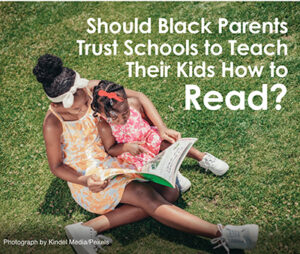 Should Black Parents Trust Schools to Teach Their Kids How to Read?
Should Black Parents Trust Schools to Teach Their Kids How to Read?
By Maya Pottiger
Originally appeared in Word in Black
Between summer camp, family vacations, and partaking in some well-deserved rest and relaxation, reading is often not at the top of students’ list of summer priorities.
But it should be.
Though reading achievements have improved in nearly every grade level since Spring 2021, they still aren’t quite reaching pre-pandemic levels. And, as a July 2022 Northwest Evaluation Association report found, the largest achievement declines are still among Black and Hispanic students, who were disproportionately impacted by the pandemic across the board.
The “Summer Slide” has always been real, and as young Black students from low-income backgrounds continue recovering from the many ways the pandemic has impacted their education, they’re fighting an uphill battle.
“Students from low-income backgrounds are even more at risk, as they are less likely to have access to consistent and effective summer programming and support,” says Katie Potter, senior literacy manager at Lee & Low Books. “During the pandemic, summer programs needed to pivot and support all aspects of a child’s learning, like social and emotional learning and physical and mental wellbeing, that were missed due to virtual schooling.”
Students from low-income backgrounds are even more at risk, as they are less likely to have access to consistent and effective summer programming and support.
KATIE POTTER, LEE & LOW BOOKS SENIOR LITERACY MANAGER
But summer reading is critical to ensuring both academic and lifelong success.
“Whether it’s playing basketball or reading,” says Kathy Lester, a school librarian in Plymouth, Michigan, and president of the American Association of School Librarians, “to really get good at something, you have to practice.”
As a classroom teacher, Ahjah Gage saw the decline in literacy levels firsthand. Now, as co-founder and associate director of The BLAC Project, she works to promote literacy as a means to uplift Black and Brown people.
“Unfortunately, it disproportionately affected the Black and Brown children even more,” Gage says. “We continue to serve so that we can continue to better our community, because we see that there’s a lacking in that, especially in the last three years.”
What Do the Numbers Say?
 Hidden in Plain Sight, a Learning Heroes survey, found that 71% of teachers are worried about students’ reading skills, compared to 39% of all parents and only 36% of Black parents. This could be explained by the pressure teachers feel from standardized testing and reading retention laws, Lester says.
Hidden in Plain Sight, a Learning Heroes survey, found that 71% of teachers are worried about students’ reading skills, compared to 39% of all parents and only 36% of Black parents. This could be explained by the pressure teachers feel from standardized testing and reading retention laws, Lester says.
Learning Heroes: Hidden In Plain Sight
“Teachers might feel a lot of that pressure and see where their kids actually are,” Lester says. “Maybe parents don’t see that same urgency.”
But there’s more to it than that. Prior to the pandemic, literacy levels in marginalized communities were already low, says Levy-Christopher, “starting with parents and trickling down to the children.”
“A lot of it is an education issue with the parents and family,” she says, “and then other issues, like books are expensive to buy.”
Black parents were above average when it came to supporting their children in writing and reading skill development over the summer, with 49% of Black parents citing this as a plan of action compared to 42% of all other parents.
A previous survey conducted in 2021, Out-of-School Time Programs, found falling behind academically and losing interest or motivation to learn is among parents’ top concerns for their children, with Black parents more significantly worried about the latter.
According to the survey, Black parents primarily view reading as a skill to be learned at school (37%), not at home (13%) or in out-of-school programs (16%). However, when enrolled in out-of-school programs to help with reading, Black parents report their children doing significantly better, with 49% reporting above grade-level reading through out-of-school programs compared to 35% who don’t participate.
Children don’t learn the same way, Gage points out, so having a diverse set of summer and after-school programs can help kids reach levels that traditional schools don’t.
i-Ready: Understanding Student Learning
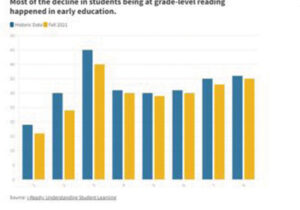 “The Black experience, when it comes to educational institutions, is vastly different from the wider experience, and I think that’s something that parents also need to take into consideration,” says Rochelle Levy-Christopher, founder and CEO of The BLAC Project. She adds that, whether it’s reading, science, or math, “everything needs to be reinforced at home. There’s so much time spent for kids outside of school … that parents shouldn’t rely solely on school for any type of education.”
“The Black experience, when it comes to educational institutions, is vastly different from the wider experience, and I think that’s something that parents also need to take into consideration,” says Rochelle Levy-Christopher, founder and CEO of The BLAC Project. She adds that, whether it’s reading, science, or math, “everything needs to be reinforced at home. There’s so much time spent for kids outside of school … that parents shouldn’t rely solely on school for any type of education.”
Early elementary grades are where we’re seeing the lowest number of students at grade-level reading, according to a Curriculum Associates report. The largest differences between pre-pandemic levels and current levels are in grades 1-3, with the most significant change in second grade (6%). This matters because students who aren’t “highly proficient” in reading by the end of third grade are more likely to drop out of school.
And, according to Education Week, Black and Hispanic first-grade students have fallen further behind than their white peers in terms of reading levels. The share of Black first graders meeting grade-level standards fell from 51% to 37%; Hispanic students fell from 54% to 42%; and white students from 65% to 58%.
Education Week
But Learning Heroes found that, in May 2022, 49% of parents thought their children were above their grade-level reading standards.
Reading early and often matters, Potter says.
“In order to combat the summer slide and learning loss that has occurred during the pandemic,” Potter says, “setting consistent and achievable reading behaviors and habits at home provides children with opportunities to be successful in the classroom.”
What Can Parents or Guardians Do?
If you’re stuck on ways to get your children to read,, fortunately our experts have some advice:
Talk to the school librarian. During the school year, librarians get to know students and what interests them, so they can likely offer specific book recommendations.
Be open-minded to variety. “Let kids have that choice,” Lester says, whether it’s reading a graphic novel or audiobook, or sitting at the kitchen table or curled up on the couch. “Especially during the summer, it should be more around enjoyment.”
Pair the book with an activity. Whether you read a short article about gardening or a book about cooking, connect that with a real-world activity. Head out to the garden or roll up your sleeves in the kitchen to make the words more relatable.
Foster their interests. Whether it’s a book about princesses, politics, or quantum physics, let kids read about what interests them. “It’s still reading,” Levy-Christopher says. “Meet them where they are. From that core interest, then you can expand from there.”
Make it interactive. Do a Q&A after a chunk of the book. Or have them read instructions for something you’re putting together. These will help build comprehension and overall literacy skills. “I don’t want people to pigeonhole themselves,” Levy-Christopher says. “Think outside the box.”
Create a rewards system. Everyone is motivated by check marks and treats. Whether it’s a daily chapter quota or monthly book total, reward the progress!
Tap into local resources. Enroll your kids in a summer book club or check the library for summer reading programs to get access to books and make reading more social.
Empower your young reader. Lee & Low created several reading lists full of books about Black children, like Books About Joy and the Diverse Summer Reading List. They also suggest Black biographies showcasing lesser-known historical figures, like Garrett Morgan and Vivien Thomas. “Ask children to think about why these ‘unsung heroes’ aren’t frequently taught and what they can do to learn about other prominent Black people that are not included in
********************************************************************************************************
(Source Browardschool.com):
Food and Nutrition Services is committed to providing Broward County students with well-balanced nutritious meals to support student achievement. Our focus is to aid student learning by educating and serving meals that reinforce lifelong healthy lifestyles. We encourage our students to POWER-UP with school breakfast and school lunch which provides students the energy they need to learn and grow.
Food and Nutrition Services offers variety and well-balanced nutritious meals. School lunches provide an assortment of foods including entree salads and fresh fruit. School meals are healthy, meeting the Dietary Guidelines for Americans. By choosing lunch at school, students learn to make healthy choices, reinforcing nutrition education taught in the classroom. Delicious breakfasts are served daily in all Broward County Public schools.
Notification of the request for dietary modification, including consistency and texture, special dietary needs or concerns must be communicated to the Cafeteria Manager of the school your child attends. A medical statement from the physician or state licensed practitioner is required annually.
For specific questions or concerns, email Casie Maggio, MS, RD, LDN, CDCES at casie.maggio@browardschools.com.
Food and Nutrition Services
7720 West Oakland Park Blvd.
Sunrise, Florida 33351
Phone: (754) 321-0215
Mary Mulder
Executive Director
*********************************************************************************************************
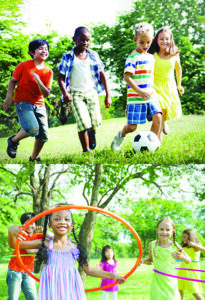 Physical activity for children and youth
Physical activity for children and youth
For children and teens to grow up healthy, it’s important they are physically active and eat healthy foods every day.
To help children develop habits that will last a lifetime, an active, healthy lifestyle must start early in life. Physical activity has benefits at every age, and helps kids:
- keep their heart and lungs strong and healthy,
- become more flexible,develop strong bones,
- keep a healthy body weight,
- lower the risk of several diseases and health problems,
- improve their mood and self-esteem, and
- do better in school.
“Sedentary behaviour” means time spent doing very little physical activity, such as sitting at a computer, playing video games, or watching television. Children and teens should spend less time on these activities and more time being active.
How can I get my kids to be active?
Your child learns the most about healthy active living from you. Include the whole family in regular physical activity and healthy eating. It’s easier if families do things together as part of the daily routine.
- Choose activities that suit your child’s age and stage of development.
- Give your child lots of time to be active in both structured activities, like organized sports, and unstructured activities, like playing in a playground.
Keep activities fun.
As teens strive for independence, they may want to do some things on their own. Encourage them to go for a walk or bike ride with friends.
How much time should my children spend being active?
(Photo source: verywell.com)Daily physical activity can include free play, games, sports, transportation (walking, cycling), recreation, and physical education.
- Vigorous-intensity activitiesmake children sweat and feel “out of breath,” so that they can only speak a few words between breaths. These can include activities like running and swimming fast or for a long time.
- Moderate-intensity activitiesalso make children sweat more and breathe a little harder but they can still talk while they move their bodies such as fast walking or a bike ride.
- Activities that strengthen muscles and bonescan include jumping rope and running, or sports like tennis and basketball.
What kind of physical activity can children with a chronic illness do?
Regular physical activity is important for all children and youth. Unfortunately, sometimes kids with a chronic illness don’t get as much physical activity as they need.
Most children with a chronic illness are able to start with small amounts of moderate-intensity physical activity that will make them sweat more and breathe a little harder every day. Before your child starts any type of physical activity, talk to their doctor about specific health concerns. If necessary, your child can also be referred to a physiotherapist for a cardiorespiratory fitness assessment.
As your child gets more comfortable, they can gradually increase the amount of time participating in physical activities, as well as the frequency and intensity of these activities.
- Children and teens with a chronic illness can usually benefit from flexibility exercises (stretching), strength training (carrying groceries or light weights) and weight-bearing physical activity (like running).
- Most children and teens with a chronic illness can benefit from high-impact physical activities (like jumping), which promote bone health.
Here are some suggestions for children with specific illnesses:
Juvenile idiopathic arthritis (JIA) is a disease that causes swelling and pain in the joints.
- Children and teens with stable JIA can exercise without making their disease worse. They should choose moderate activities that promote flexibility and strength.
- Water exercise puts less stress on the joints and may improve range of motion, strength and fitness.
- Impact exercises (like running) are important for muscle and bone health. Impact exercises are safe when a child’s joint disease is stable. Consult with your doctor before your child or teen participates in any competitive contact sports.
Hemophilia is a genetic disorder where the blood does not clot properly.
- Children with hemophilia need to see a doctor before participating in contact or collision sports like most martial arts, hockey or football.
- Exercise makes muscles stronger and helps protect the joints. Strong muscles may decrease bleeding episodes.
- Cycling, running and swimming are good activities for children and teens with hemophilia.
- Give written instructions to your child’s coach, teacher or caregiver on how to recognize, prevent and treat bleeding.
Asthma is an illness that causes problems with breathing.
- Children with asthma can take part in any kind of physical activity, as long as their symptoms are under control.
- Physical activity can help children with asthma develop stronger lungs.
- Activities like swimming are less likely to cause problems with asthma than activities that involve a lot of running.
- Keep a record of symptoms, triggers and treatments to help you and your child’s doctor decide on the best kind of physical activity.
- Tell teachers, coaches and caregivers about your child’s asthma and how to recognize, prevent and treat breathing difficulties.
Cystic fibrosis (CF) is a genetic disease that causes the body to make thick, sticky mucus that affects the lungs and digestive system, making it more difficult to breathe and to break down foods.
- Children with CF can participate in most kinds of physical activity as long as their symptoms are under control. Talk to your child’s doctor before starting any kind of exercise.
- Exercises that increase heart rate and help the lungs get stronger, such as hiking, swimming or running, are the best for children with CF.
- Children and youth with CF should not participate in scuba diving
How can families support healthy active living?
- Set limits on how much time your children and teens spend in front of a screen(that includes television, computers, tablets, video games, and smart phones). For children aged 2 to 5 years, limit total daily screen time to under 1 hour. Screen time is not recommended for children under 2 years. \
- Playing organized sports (such as being on a soccer or hockey team) isn’t enough to keep children and youth healthy. Encourage your child or teen to be active every day, by walking or cycling to a friend’s house, skipping rope, or playing in a neighbourhood park or playground.
- If you drive your children to school, try walking instead, or organize a walking club with neighbours.
- Encourage your children to take the stairs instead of the escalator or elevator.
- Get your child involved in activities around the house: carrying the groceries, raking leaves, or shoveling snow.
- Be sure activities are safe. Children and youth should wear protective equipment for activities like cycling, skating, skateboarding, soccer, and other physical activities.
- Remember to be a good role model!
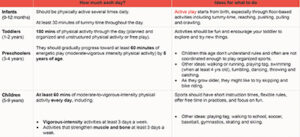
******************************************************************************
“For it isn’t enough to talk about peace. One must believe in it. And it isn’t enough to believe in it. One must work at it.” – Eleanor Roosevelt
The purpose of the Speak Up Speak Out Youth Forum Series (Formerly known as Young Voices Matter) is to provide students the opportunity to safely engage in conversations with their peers and adults on a variety of topics that resonate with them.
In addition, we aim to connect students with community leaders and professionals who can share their experiences, knowledge, and areas of expertise with the students and hopefully provide them with the guidance and support they need. It has become evident, from discussions with students and a review of social media postings, that our students have questions and want responsible engagement to help them sort through the issues they face.
The Speak Up Speak Out Youth Forum is designed to address student concerns in a platform that is student-driven and accessible to all students. Currently, all forum activities are being provided through Microsoft Teams.
Content Accordion
Your Choice, Your Action, Your Life
Use these PSA videos, made with BCPS students, along with their corresponding lesson plans to raise awareness and spark dialogue around issues related to bullying and diversity. Most can be used with students grades 4-12.
*Be A Hero
*If you can’t face it
*Unmask Diversity We all have different strengths
*We are all human
*We are all one world
*Words can hurt
*Words can leave a lasting impression
*Would you say it to my face
*Communicate in a real way
*Debate Initiative
The Broward County Debate Initiative is a partnership between local businesses and high school debate programs within Broward County. With sponsorship options ranging from individual tournament travel to full-year team assistance, your investment will help build resumés, teach valuable life skills, and ultimately change lives.
*Get Help
First Call for Help: Dial 211 for information and resources.
BCPS Mental Health Resources
BCPS Mental Health & Wellness Portal
CDC’s Resources for Parents and Families
Child Mind Institute Parent’s Guide to Traumatic Event
Coping with Grief after Community Violence
Depression in Children and Adolescents
Lets Help – A Guide for Grownups Helping Children though Tough Times
National Institute of Mental Health, 1-301-496-4000
SAMHSA, National Mental Health Information Center
Go to Broward County Public School’s reporting website
Supporting Children in the Aftermath of Crisis and Loss
Teen Health, The Nemours Foundation
Youth Forum on Mindfulness & Mental Health
Psychology Degree Guide
******************************************************************************************
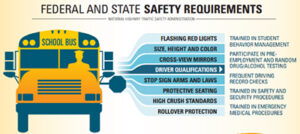 Broward County Public Schools’ Student Transportation and Fleet Services (STFS) Department is committed to the safe and timely transportation of all Broward County Public Schools’ bus riders in compliance with federal, state and local guidelines. The department is divided in to five (5) bus terminals located geographically across Broward County (Pompano Beach, Oakland Park, Davie, Pembroke Pines and Southwest Ranches). Each bus terminal is identified by distinct routes number (1000, 2000, 3000, 4000, 5000). This facilitates effective and efficient communication between Transportation and stakeholders.
Broward County Public Schools’ Student Transportation and Fleet Services (STFS) Department is committed to the safe and timely transportation of all Broward County Public Schools’ bus riders in compliance with federal, state and local guidelines. The department is divided in to five (5) bus terminals located geographically across Broward County (Pompano Beach, Oakland Park, Davie, Pembroke Pines and Southwest Ranches). Each bus terminal is identified by distinct routes number (1000, 2000, 3000, 4000, 5000). This facilitates effective and efficient communication between Transportation and stakeholders.
School buses were designed with student safety in mind. The yellow color is easily seen by motorists, even in their peripheral vision. The sides of the vehicle are reinforced to protect passengers in a crash, and the high seat back provides protection during an impact. Parents who think that their children are safer if they personally drive them school should consider this: students are about 20 times more likely to arrive at school safely via school bus than if their parent drives them.
School Buses Reduce Traffic
Suppose the elementary school closest to your house serves about 500 students. Can you imagine what the surrounding roads would look like at 8 am if a few hundred parents drove there separately, all trying to get to the school to drop off their children? In fact, each school bus removes an average of 36 cars from the roads. More children on the bus means fewer cars on the road. This means less traffic, lower emissions, safer roads around the schools at drop-off and pick up. The impact of your choice to use school transportation can touch many others in a positive way.
How Do I Get My Child To School If They
Can’t Ride The School Bus?
The final decision about what is the most appropriate way to get a child safely to and from school must rest with the parent(s)/guardian(s). The parent/guardian is the person most knowledgeable about the child’s abilities and is in the best position to choose the safest and most appropriate way in their area to get the child safely to and from school. Some options that a parent/guardian might want to consider are: walking with a parent/guardian; walking in a group with other students/parents; being driven to school (by a parent/guardian, grandparents, friends, etc.); carpooling; riding bikes; public transportation; private transportation providers; and childcare providers.
Learning Opportunities
Parents can teach their children how to manage their time efficiently if they make use of the services offered by a school bus. Since a school bus operates on a strict and definite time schedule, then parents can give their children a time limit to prepare every morning or else they will miss the school bus. It will teach them to wake up early so that they can prepare the things they need for school and it may also teach them to be responsible with their time.
Our Bus Operators and Bus Attendants average over ten years of transportation experience and all our employees participate in an extensive safety training program. Our team also performs regularly scheduled and ongoing vehicle maintenance checks to ensure our fleet of school buses are in the best operating condition. STFS is very extensive operations in comparison locally and nationally.
Technology Drives Efficiency and Effectiveness
STFS provides transportation services to two hundred and thirty-four (234) public schools (K-12 and Technical Colleges). An average of 74,000 students are transported daily travelling close to 16.3 million miles annually. The department creates, maintains, and executes daily services based on student eligibility, educational programs, and average ridership. Global Positioning System (GPS) is installed on all school buses for use to locate school buses, identify driver actions along with estimated bus arrival to respond to customer requests.
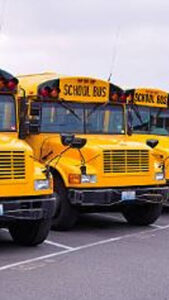 Buses Make School Accessible For All
Buses Make School Accessible For All
Access to quality education is critical for all children, which makes school buses an absolute necessity.
*************************************************************************************************
 Congresswoman Wilson Announces Additional $155 Million To Florida School Meal Programs
Congresswoman Wilson Announces Additional $155 Million To Florida School Meal Programs
Submitted by Karol Molinares
MIAMI, FLA. – Recently, Congresswoman Frederica Wilson (FL-24) announced that school meal programs, as well as child and adult day care providers, in Florida will receive an estimated $155 million in additional funding this school year through the Keep Kids Fed Act.
In June, Congresswoman Wilson voted to pass the Keep Kids Fed Act to ensure that schools can continue providing meals for students despite ongoing supply chain issues. The legislation allowed the Department of Agriculture (USDA) to provide additional assistance to child nutrition programs by reimbursing them at a higher rate as they continue to serve healthy meals.
“When our kids are hungry, they aren’t ready to learn,” said Congresswoman Wilson. “As a lifelong educator, I’ve seen firsthand just how important they are for students of every age and grade level. I’m proud of House Democrats for putting our kids first and funding these crucial school nutritional programs.”
Under the bipartisan Families First Coronavirus Response Act (FFCRA), Congress provided USDA with key flexibilities to help child nutrition programs continue serving children during the COVID-19 pandemic. This relief helped feed hungry students during the school closures, virtual learning, and social distancing that disrupted traditional meal service. Without the Keep Kids Fed Act, important flexibilities provided under FFCRA would have expired on June 30, 2022
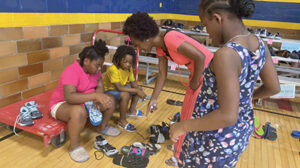
Families feel pinch of back-to-school spending
Elizabeth Gabriel
https://www.wfyi.org/
Hundreds of families recently withstood the sweltering July heat to stand in line at a free school supplies event in Haughville, a neighborhood on the Near Westside of Indianapolis. It was nearly double the number of families compared to last year who showed up to the Christamore House community center. Parents said the surge in inflation makes it harder for them to afford back-to-school items.
“The price of everything went up — gas, food prices — everything just went up high,” said Kewanna Heard, a mother of seven children. “And your job is not paying you as much to sustain your living. So it’s been real hard.”
Across all consumer products, including those Heard was concerned about, the latest inflation rate was about 9 percent. Even though some Hoosier wages have increased by roughly 4 to 7 percent — depending on the industry and the particular job — it isn’t enough to keep up with the year-to-year price increases the country hasn’t seen for almost 40 years, said R. Andrew Butters, an assistant professor of business economics and public policy at Indiana University.
The labor market is strong, Butters said, and some households have increased income, but it’s not enough.
“Those gains are still probably unlikely to fully compensate the households for the increase in costs,” he said.
Last school year there was a record-breaking increase in back-to-school spending because people were buying more items as students returned to in-person learning following the height of the pandemic.
This year, families are expected to spend even more – $864 on back-to-school items, roughly $15 more than last year, according to the National Retail Federation.
But this year the spending increase is due to everything – including school supplies – being more expensive. Butters said families on average are spending roughly 10 percent more on overall living expenses than they did in previous years.
The latest Consumer Price Index results showed the most significant inflation increases have come from energy components, such as household utility bills and gas for vehicles, as well as groceries. That leaves less money to spend on students’ needs, like new clothes, notebooks, calculators and general classroom supplies some teachers request.
“If you have to choose between getting your kid crayons and putting food on the table, you’re definitely going to pick the food on the table,” said La’Toya Pitts, chief executive director of the Christamore House.
Although the economic status varies for Haughville residents, the area is home to many low-to-zero-income families. Pitts said roughly 95 percent of the population that they serve are Black and Brown families. The center typically hosts supply drives once or twice a year with a projected turnout of 200 to 250 families per event.
The Haughville native said the surge in prices is affecting everybody. Families who have never struggled to provide for their children are now asking for support, from gift cards to grocery stores to bus passes or other transportation needs. But the gap between families who already lacked access to resources is even bigger.
Inflation causes strain for donation drive organizers
The Christamore House’s supply drive was organized by four high school students participating in an eight-week internship sponsored by the Bank of America Student Leaders program. The Rushville-based organization Changing Footprints, which has several Indianapolis offices, donated 700 pairs of shoes. The Black Employee Network and an anonymous pastor also donated supplies. The Christamore House used roughly $2,500 to purchase about 300 school uniforms that were distributed for free.
Even with the community support, student organizers said more is needed to help local families. When shopping for supplies, they found their dollars didn’t stretch as far as they used to.
“For instance, $200 doesn’t go a lot towards backpacks anymore,” said Nik, a summer intern and a senior at Park Tudor High School. “That’s 10 backpacks. When we’re trying to serve 500 people that’s just not something we can afford as a local nonprofit.”
Heard, the mother of seven, arrived late and missed out on the free uniforms and some of the school supplies. Now she’s trying to find other places that will provide free school clothes so she doesn’t have to rack up her credit card debt.
“We had to stop going to unnecessary places,” Heard said. “So we do everything in our house now. We’ve cut back on certain things like the stuff they used to eat, like name brand foods. We’ve been switching them out for the non-name brand foods.
Everything is limited right now.”
Indiana lawmakers are debating in a special legislative session how to best help Hoosiers struggling with inflation-related costs.
But some of the energy price increases are largely out of the control of state legislators until international relationships, such as the war in Ukraine, are under control.
Butters, the IU assistant professor, hopes to see lower inflation rates by the end of the year as the Federal Reserve works to combat inflation, families return to the labor market and supply chain issues decrease.
Contact WFYI education reporter Elizabeth Gabriel at egabriel@wfyi.org. Follow on Twitter: @_elizabethgabs.
**********************************************************************************************************
 Black Parents Are More Involved in Their Children’s Education Than Ever
Black Parents Are More Involved in Their Children’s Education Than Ever
The COVID-19 pandemic gave moms and dads an inside look at what their kids’ learning experience is like, sparking concern and greater engagement.
By Maya Pottiger
(Source Word In Black):
School buses stopped running, classrooms turned virtual, and the traditional education system turned upside down. In the initial months of the COVID-19 pandemic, the days of parents and guardians sending kids off to school and not reuniting until dinnertime were over. Instead, many families were holed up inside, 24 hours a day, working or attending classes in a shared space.
Though it wasn’t without difficulties, the new setup gave parents an insight into their children’s school-day lives that wasn’t previously available.
“Parents have had a front-row seat to their child’s education,” says David Park, the senior vice president of strategy and communication at Learning Heroes. “They’ve seen where their child excels and where they need additional support.”
It’s also allowed parents to be more engaged with their children’s education than ever before — particularly among Black parents. As a result, their relationship with the schools and teachers is changing as they take a more active role in ensuring their child is set up for success. But it hasn’t all been positive.
“When it comes to Black parents, what’s striking is that there’s so much more worry and concern than there was before the pandemic,” Park says. “This is really across all parent demographics, but with Black parents in particular.”
Top Concerns Among Black Parents
A new Learning Heroes study, Hidden in Plain Sight, surveyed parents and educators across the country about top concerns and ways forward. The top concerns among Black parents were having politicians making decisions about what students learn (64%), children’s happiness and emotional well-being (62%), and children being exposed to violence at school (59%). These were relatively similar to the top concerns of Hispanic and white parents.
“Parents want their children to be happy and safe. They want their child to be protected socially and emotionally,” Park says. “They want to team up with their school and their child’s teacher to make sure that they have the skills that they need to succeed. And they’ve spoken very clearly that they don’t see a role there for politicians in the classroom.”
Public schools were 46% white in Fall 2019, meaning more than half of the students they served were students of color. Yet the people making decisions on their behalf are largely white.
“You have this dichotomy of children — basically an ecosystem of students of color — that are driven by people that don’t look like them,” says Harrison Peters, the CEO of Men of Color in Educational Leadership and former superintendent of Providence Public School District. “Teachers get really frustrated when they work really, really hard, and there are policies and laws that are implemented that don’t align with their support.”
Black parents got to see those policies and laws, as well as teacher frustration, play out over Zoom with their children. Now, according to an analysis of Learning Heroes data, they’re more concerned about their children than ever.
Since 2019, there has been a 16% increase among Black parents who worry about their children being on track with academic expectations. Further, there was a 10% jump among Black parents worried about their children gaining the skills they need to succeed in college. Plus, Black parents are continuously more worried about their children’s happiness and well-being (10% increase) and bullying (11% increase).
During virtual learning, Peters watched his high school-aged son withdraw socially. But when it came time to send them back in-person, he was also nervous about his song being with several thousand of the with several thousand other students.
“You want to make certain that you drop them off at school and get them back the same way you drop them off,” Peters says. “I could see a lot of parents are fearful about that.”
Parents have had a front-row seat to their child’s education.
But, especially for marginalized students, school is a place for more than writing and arithmetic, Peters says. It’s a “safe haven” with clinicians, balanced meals, and social services. And when those are taken away, “challenges manifest and are amplified.”
Research at The Hunt Institute has shown similar results. Black parents cited school safety and student mental health and emotional well-being as major issues, says Erica Vevurka, director of K-12 at The Hunt Institute. In that survey, 71% of Black parents felt that school safety is a problem, and 39% said it was a “very big problem.” It also found that 45% of Black parents said the pandemic was disruptive to their children’s mental health and emotional well-being.
“It’s education, but it’s also more than education. Parents are worried across the board,” Park says. “Parents have had a really tough couple of years during the pandemic, and that shows in their concerns for their children and their children’s well-being. Everybody’s on high alert right now.”
Black Parents Are Increasingly More Involved in Children’s Education
Whether it’s from seeing constant headlines about high levels of learning loss or from the new insight virtual learning allows, Black parents are more involved in their children’s education than ever.
Plus, after spending multiple school years at home in virtual classrooms, parents have directly seen what their children are learning, and how they’re progressing academically and emotionally.
“From this shared experience, parents across the board are more aware and attuned to their children’s education and generally feel more empowered to advocate for their children’s needs when engaging with schools and educators,” Vevurka says.
Responses to the Learning Hero survey show 92% of Black parents found more time to talk to their children about their everyday assignments, and 88% got a better understanding of what their children are expected to learn at their grade level.
“Since the pandemic, parents have really been leaning into their child’s education at unprecedented levels,” Park says, and survey responses indicate that level of engagement is here to stay. “So not only are parents more engaged now, they tell us that they will continue to be engaged in various ways.”
COVID brought upon “forced innovation,” Peters says, in that we’ve had to strengthen how we communicate without relying on being together physically. While he was a superintendent, telecommunication resulted in the highest level of Black parent participation in parent-teacher conferences.
“We were able to plug in right there,” Peters says. “This idea of forced innovation, this is one of the positives that came out of COVID. It really brought us together and allowed us to strengthen our communication.”
They also want to have a say in their children’s education. In terms of these actions, 40% of Black parents cited suggesting changes to the textbooks used as a primary means. More than half of Black parents said they want to provide feedback on how to spend COVID recovery and relief funds (55%) and voice their opinions about curriculum during school board meetings (54%). Just under half of Black parents said they would like to review daily lesson plans.
“Parents across the board really have let us know that they want to have more of a say in education,” Park says, “but when we look at the percentage of the parents who have actually done some of these things, they’re relatively small.”
Across the country, states are creating “more formal opportunities” for families to be involved in decisions, Vevurka says. But in order for these to be effective, the communication and participation platforms need to be accessible to all parents.
“Education leaders must ensure a diverse group of parents are represented when garnering input,” Vevurka says, “and to do that, they must also give parents from backgrounds underrepresented in these spaces time to rebuild trust in education systems.”
The Changing Parent/Teacher Relationship
From lower graduation rates to lagging reading levels to a shortening supply of teachers, students and educators have struggled recently. And as parents become more engaged with their children’s education, they’re also changing the way they interact with both the teachers and the school.
The Learning Heroes report found that 87% of Black parents think it’s “essential” for families and teachers to work closely to overcome the pandemic’s impact on learning, and 89% think it’s “essential” for parents and teachers to trust each other in order to achieve this.
“One of the things that was a big takeaway for us is that parents and educators are united, not divided,” Park says. “We continue to hear this national narrative that pits parents and educators against each other, but all of our research shows something very different. We see parents and educators wanting to team up on behalf of kids.”
Parent and educator relationships are indeed changing, Vevurka says. And, as research supports, parents are a “major part” of reducing learning loss and opportunity gaps for students.
“We think that education leaders are also seeing this as a key opportunity for pandemic recovery,” Vevurka says, “which we hope will trickle down to the classroom level as parents and teachers supporting and collaborating on student learning.”
Teachers get really frustrated when they work really, really hard, and there are policies and laws that are implemented that don’t align with their support.
HARRISON PETERS, MEN OF COLOR IN EDUCATIONAL LEADERSHIP CEO
What Park found surprising in the report was that both parents and educators agree the concept of equity is “critical to the success of every student” — a number that only rose once the report defined equity.
With parents strengthening their voices and districts doing a better job of inviting parents to the table, Peters says we’re seeing a difference.
“You’re starting to see this belief that, hey, it’s OK to treat schools differently and to treat students differently,” Peters says, “as long as you’re treating them in a way that you’re getting them what they need.”
Through COVID’s forced innovation, there has “definitely” been an increased opportunity to strengthen the parent/teacher relationship, Peters says. And as educators and districts see the “extreme value” of giving parents and students a voice, he is optimistic that it will continue.
“We’re starting to see that that’s definitely part of the secret sauce in the learning and the transformation process of our schools and upward trajectory,” Peters says.
An Increase in Summer Learning
As part of their changing relationships with teachers, Black parents are the most likely to connect with their child’s teacher before the end of the school year to figure out the specific learning priorities for the summer months. The Learning Heroes survey found that 35% of Black parents do this, compared to 29% of all parents.
They are also more likely to enroll their children in summer programs, with 22% of Black parents taking this action compared to 16% of all parents.
“Summer programs provide the enrichment opportunities that parents are looking for more now more than ever,” Park says.
Research shows that educators also see a difference in students enrolled in enrichment programs over the summer compared to those who aren’t.
“Especially after two really grueling years, parents want these enrichment programs to help their kids succeed and be ready for the next grade,” Park says. And it doesn’t mean tutoring or summer school programs, but “opportunities to help their child gain more of the skills and knowledge that they need to succeed in the next school year and beyond.”
*****************************************************************************************
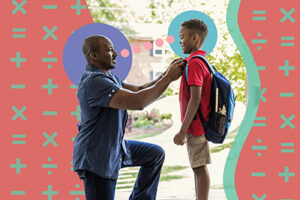
First Day of School Traditions That We Love
By Wendy Wisner
Fact checked by Emily Swaim
The first day of school is often a mix of excitement and fear for children. There’s usually a lot to look forward to, like making new friends, meeting new teachers, and getting to participate in school activities. But there are also many unknowns, too, like wondering if your teacher will like you, feeling uncertain about the academic workload, and stressing about making the adjustment to a new environment.
Making the back-to-school transition a positive and nurturing experience means starting school on the right foot. What better way to do that than to start the year off with a back-to-school ritual?
How Back-to-School Rituals Help Kids
Back-to-school rituals help our kids stay grounded as they make the transition from the carefree days of summer to the more structured days of school. These traditions can help ease anxiety by framing the experience as something welcoming and special. Many back-to-school rituals also provide a space for children to sort out their feelings and express themselves.
We all have a back-to-school tradition that we love. Maybe it’s something we did growing up that we want to pass on to our kids when they start school, or perhaps it’s something we’ve adopted as a family. If you are looking for more traditions to add to your list—or if you are looking for a new spin on a beloved tradition—we’ve got some awesome ideas for you.
How to Create a Successful Morning Routine for School
9 First Day of School Traditions and Rituals
Whether you like to take photos, plan a big breakfast, or go out for ice cream after school, having a first-day ritual can be fun for both you and your kids—and give you all something to look forward to. Here are some ideas on what you can do with your kids that first day.
Take First Day Photos
Verywell / Nusha Ashjaee
Almost all of us take photos of our kids on their first day. And, it has become a common practice to share these pictures on social media and watch our social media feeds light up with other parents’ photos as well. Many of us end up comparing our kids’ first day of school pictures to their last day of school pictures to see how much they’ve grown and changed.
Siobhan Alvarez, nonprofit executive, blogger, and mom to two young sons under age 3, has a special twist on the first day of school picture tradition. In addition to pictures, she also does a first-day interview alongside the pictures.
“I use the same questions each year, and keep all of them in a binder together,” Alvarez shares. “It’s a wonderful way to look back at the memories all in one place.
Create a Scrapbook
Take those back-to-school photos to a whole new level and add them as part of a scrapbook project that you can work on throughout your children’s school career, suggests Ashley Brown, founder and owner of Routine and Things. Brown’s two daughters—ages 2 and 4—are starting school this fall, so in addition to taking their pictures, she plans to jot down some notes about them.
“I will also write a note on the back of the photo describing their personalities and quirks as individuals and sisters year after year,” Brown says.
When her kids are grown, she plans to take these pictures and notes and turn them into a scrapbook. “My intention is to create a scrapbook using the photos and give them to each girl on their high school graduation day,” Brown shares.
Organize School Supplies
Verywell / Nusha Ashjaee
Is there anything more exciting than a stack of fresh notebooks, pencils, erasers, and glue sticks? Once we have our kids’ school supply lists in hand, most of us make a ritual of buying our kids’ school supplies together with them.
Going to the store and finding all of the items on the school supply list can almost feel like a treasure hunt for your kids. Let them make choices about the supplies—picking out notebook colors and designs that suit their personalities, for example.
Once home, lay out everything you’ve bought and put them in backpacks or to-go bags, especially if supplies must be brought in on more than one day. Getting your children involved in this process can make school feel more tangible to them.
Set Goals Together
Verywell / Nusha Ashjaee
In addition to taking first-day photos, Heather Aulisio, MeD, an elementary school teacher, mom, and consultant for Mom Loves Best suggests holding up a chalkboard with pertinent info about the upcoming school year, like their teacher, grade, and school. Along with that, Aulisio has her son write down three goals for himself.
“Whether it’s to make three new friends, earn Student of the Month, or get better in a subject area, we seal these goals in a special envelope,” Aulisio shares. Then, she does a follow-up with her son at the end of the year to reflect on those goals.
“On the last day of school, we open the envelope and look back to see if these goals were accomplished,” she says. “Goal setting is important at any age and it really helps set a tone and purpose for a new school year.”
How to Set Goals for Your Child This School Year
Prepare Special Packed Meals
They say that food is the way into the heart, and that is definitely true for our children. Packing them a snack or lunch that “feels like home” is a great way to make them feel more secure as they venture off to school.
You also can let them pick out their favorite foods or snacks and pack those for them. Even better? Include a little handwritten note letting them know you are thinking of them, and that you know how awesome and strong they are on this big day.
Creative Ideas for Packed Lunches Kids Will Actually Eat
Throw a Back-to-School Party
Who doesn’t enjoy a party? Back-to-school parties are a great way to ease back-to-school tension, as well as reconnect with kids you may have lost touch with over summer break. Sunny Verma, education expert, and chief executive officer of Tutor Bright, shares some benefits of back-to-school parties.
“[Because] not many kids have interacted socially, it’s a great time to invite over the classroom and neighborhood kids,” says Verma. “This doesn’t have to be grand or over the top; it can just be a small get-together.”
Having a party also helps kids reconnect and gets them excited to see each other as the school year approaches, says Verma. Parties also can help remove the back-to-school anxiety and set up our kids for success.
Get a Night-Before-School Treat
Everyone wants to promote healthy eating habits for their kids, but getting them a treat on the night before school starts is a fun way to usher in the new school year and say goodbye to summer fun.
Stefania Baita, mom of a 4- and 7-year-old, and life and career coach, does a back-to-school ice cream run on the last day of summer break. It’s a tradition that’s been handed down through several generations of her husband’s family.
“Our family’s back to school ritual is to go and get ice cream at a local ice-cream parlor the last night before school starts,” says Baita. “This is something that my husband used to do with his grandparents when he was a child and it is a memory that he cherishes. I loved the idea when he suggested we do the same with our kids!”
Read a Special Book
Having a warm, soothing book you read on or right before the first day of school is a wonderful ritual that can help your child feel safe and secure. Whitney Rancourt, mom, blogger, and elementary school reading teacher, shares a book that many of us have grown to love and that fits this role perfectly for children.
“One of our family’s favorite rituals for back to school (or back to daycare) is to read ‘A Kissing Hand for Chester Raccoon’ the night before our separation,” Rancourt shares. “This little story is about a raccoon who is nervous to go to school. Mama Raccoon gives Chester a special kiss on the palm of his hand to remind him of her love.”
Just like in the book, Rancourt makes sure to give both of her children a kiss as she sends them off to school the next morning to remind them of the story.
“As an elementary school reading teacher, it’s probably no surprise that our special back to school ritual involves a book,” she says.
Try a “Park Till Dark” Night
Jaymi Torrez, parenting and travel blogger, shares a special activity her family does every year on the last day of summer break. She says it helps her family savor the carefree lifestyle of summer for one more day before starting the school year.
“We eat dinner and do our nighttime routines like normal,” says Torrez. “But instead of putting on jammies and crawling into bed, we take our kids to the park in our neighborhood. We call it ‘Park Till Dark,’ and we let our kids run, climb, and play well past bedtime, till the moon comes out and sleepy yawns make an appearance.”
Important Food Safety for Kids’ School Lunch Boxes
A Word from Verywell
First-day rituals and traditions can make the transition back to school that much more comfortable and stress-free for your kids. Look for things you can do with them that will not only be fun but also build cherished memories for years to come.
It’s important to note, though, that traditions and rituals are not a substitute for other types of support your kids might need. If your child is experiencing high levels of anxiety about back-to-school, or if you anticipate that they might need emotional support as the school year begins, you shouldn’t hesitate to reach out for help.
Checking in with your child’s pediatrician, their school’s psychologist, or their teacher is a great place to start. Remember, back-to-school anxiety is actually quite normal, and there are many ways to help your child have an affirming experience as they begin the new school year.
***************************************************************************************************
Browardschools.com
Mentoring Across Broward, the District’s comprehensive mentoring initiative, addresses many of the concerns expressed by students, parents, school staff and community stakeholders who are looking for ways to provide opportunities for all students to benefit from mentoring relationships with caring peers and adults.
Mentoring Across Broward, which operates within this department, uses a multi-tiered approach to leverage school and community-based mentoring resources to better serve the needs of students. Youth Mentoring Programs will continue to provide mentoring opportunities for individuals and organizations to meet one-on-one and in small groups with students on school campuses during the school day.
- Latinos in Action
- Minority Male Initiative
- Committed to closing achievement gaps between its male learners, Broward College continues to find new ways to provide sustained support to undeserved students. The Minority Male Initiative focuses on supporting completion goals, as well as, improving persistence and retention rates among these students.
- Please visit our websiteBroward College
- 100 Black Men of Broward County
- org – Ready to begin your journey?
- The 100 Black Men of Greater Fort Lauderdale welcomes you to be a part of an organization that is making a serious commitment to elevate the Black Family by addressing our Four For The Future.
- Visit100 Black Men of Broward County
- Broward College Minority Male Initiative
- Minority Male Initiative
- Committed to closing achievement gaps between its male learners, Broward College continues to find new ways to provide sustained support to underserved students. The Minority Male Initiative focuses on supporting completion goals, as well as, improving persistence and retention rates among these students.
- VisitBroward College Minority Male Initiative
- Big Brothers and Big Sisters
- Big Brothers Big Sisters Bigs in Schools is a one-on-one mentoring opportunityfor adults and college students who meet with a child for one hour a week during school hours or during aftercare hours. Mentors may help with homework, play fames have fun and be a friend. Big Brothers Big Sisters also operates mentoring programs in select schools that target specific populations of students such as Muertes Latinas at Indian Ridge Middle school which pairs professional immigrant women with young girls with similar cultural backgrounds.
- Big Brothers Big Sisters Website
- Telephone PH: 954-453-3724
- The Football UNITES Cultural Tours are an opportunity for local youth to experience different cultures within South Florida. Groups will meet at Hard Rock Stadium and visit a Miami-Dade or Broward location to participate in RISE training and a day of cultural immersion. Miami Dolphins players, cheerleaders and staff are also invited to join the students.
- Miami Dolphins Football Unite Program Website.
- Reading Pals Mentoring & Early Literacy Program
- Reading Pals is a United Way of Broward County and Broward County Public Schools collaborative effort to increase student reading proficiency with the goal of ensuring that students are reading at grade level by third grade. Mentors work one on one with pre-K and early elementary students reading to/with them for ½ to 1 hour per week. Students participating in the program receive up to 16 books to take home in addition to summer reading kits.
- Reading Pals Mentoring WebsitePH: 954-453-3742
- Take Stock In Children
- Take Stock in Children’s mission is to break the cycle of poverty for low income, academically qualified students by providing opportunities for post-secondary education. TSIC offers college scholarships to students who are matched with adult mentors who meet one-on-one with students in middle and high school providing support and guidance that prepares them for academic and personal success.
- Take Stock In Children Website
Telephone: 954-201-7846 - School-Based Mentoring
- School-based mentoring is an opportunity for individual schools to create a program unique to their location. Many of the mentors are essential staff at the school.
- If you’d like to implement a school-based mentoring program, please contact Wanda Robinson at 754-321-1600 for additional information, training and/or assistance.
- Mentor Program Development Form
- Mentoring Across Broward Program
- Mentoring Tomorrow’s Leaders
5000 Role Models of Excellence Project – Broward County, Florida Chapter
 he 5000 Role Models of Excellence Project is a dropout prevention, mentoring program committed to closing the minority male achievement (access) gap by guiding minority male students along a carefully charted path through grades K-12 and college or ensuring the attainment of other post-secondary credentials, and increasing their employability in higher wage, high skills jobs within high demand industries. The program also teaches participants to respect law enforcement, the law, women, school officials, and parents. Students are also exposed to valuable educational, and leadership opportunities that are designed to develop and strengthen their leadership skills. The students and adult mentors wear a distinctive uniform consisting of black pants, a white dress shirt, and a 5000 Role Models of Excellence Project signature necktie. For more information about 5000 Role Models of Excellence Project may be found at https://www.5000rolemodels.com/broward, email MentoringAcrossBroward@browardschools.com,or call 754-321-1600.
he 5000 Role Models of Excellence Project is a dropout prevention, mentoring program committed to closing the minority male achievement (access) gap by guiding minority male students along a carefully charted path through grades K-12 and college or ensuring the attainment of other post-secondary credentials, and increasing their employability in higher wage, high skills jobs within high demand industries. The program also teaches participants to respect law enforcement, the law, women, school officials, and parents. Students are also exposed to valuable educational, and leadership opportunities that are designed to develop and strengthen their leadership skills. The students and adult mentors wear a distinctive uniform consisting of black pants, a white dress shirt, and a 5000 Role Models of Excellence Project signature necktie. For more information about 5000 Role Models of Excellence Project may be found at https://www.5000rolemodels.com/broward, email MentoringAcrossBroward@browardschools.com,or call 754-321-1600.
Our goal is to instill, in the youth of Broward County, the values of mainstream America, while respecting the existing values of the individual. The 5000 Role Models of Excellence Project focuses on three general principles:
- Pinpoint progressive and successful men in our community to emulate;
- Promote positive alternatives to self-destructive behaviors an societal pitfalls;
- Everyone must assume responsibilities, preparing our youth for the challenges and struggles in today’s society.
· South Florida
- 8400 NW 36th Street, Suite 450 Doral, FL 33166
- 305-371-3330
- womenoftomorrow@womenoftomorrow.or
- Jason Taylor Foundation / BluApple Poetry Network Website
JASON TAYLOR FOUNDATION
ADDRESS 10380 W. State Road 84, Unit 11
Davie, FL 33324
PHONE (954) 424.0799
info@jasontaylorfoundation.com
- South Florida CARES Mentoring Movement Website
- SOUTH FLORIDA CARES MENTORING MOVEMENT
15500 New Barn Rd - Suite 202B
- Miami Lakes, FL 33014
- hello@southfloridacaresmentoring.org
- office 305-200-3118
- text 305-600-7452
- https://www.southfloridacaresmentoring.org/
- Volunteer Services
 The PROMISE (Preventing Recidivism through Opportunities, Mentoring, Interventions, Supports & Education) program represents the most comprehensive thinking available to address socially unacceptable or illegal behavior, targeting both short and long term academic success, aligning best practice models and Restorative Justice principles, and developing pro-social and resiliency skills. PROMISE, while addressing the behavior specific to the youth, is committed to addressing family and community circumstances that serve as both strengths and challenges for the youth’s resiliency. PROMISE uses a comprehensive set of supports and education to address the social and emotional needs of
The PROMISE (Preventing Recidivism through Opportunities, Mentoring, Interventions, Supports & Education) program represents the most comprehensive thinking available to address socially unacceptable or illegal behavior, targeting both short and long term academic success, aligning best practice models and Restorative Justice principles, and developing pro-social and resiliency skills. PROMISE, while addressing the behavior specific to the youth, is committed to addressing family and community circumstances that serve as both strengths and challenges for the youth’s resiliency. PROMISE uses a comprehensive set of supports and education to address the social and emotional needs of
- Mentoring Tomorrow’s Leaders (MTL) is a peer-to-peer mentoring and student leadership program that serves students in grades 3rd– 12th with an emphasis on high school programming. MTL promotes academic advancement, pupil progression, student engagement and successful school completion utilizing the MTL Five Pillars.
For more information, please email mentoringacrossbroward@browardschools.com or call (754) 321-1600.



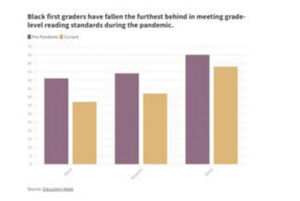
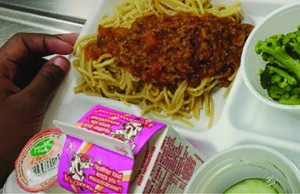




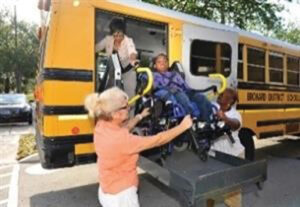
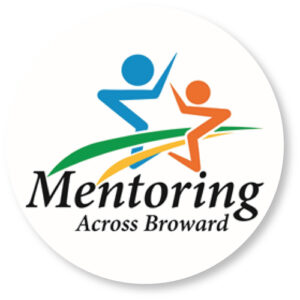

Be the first to comment